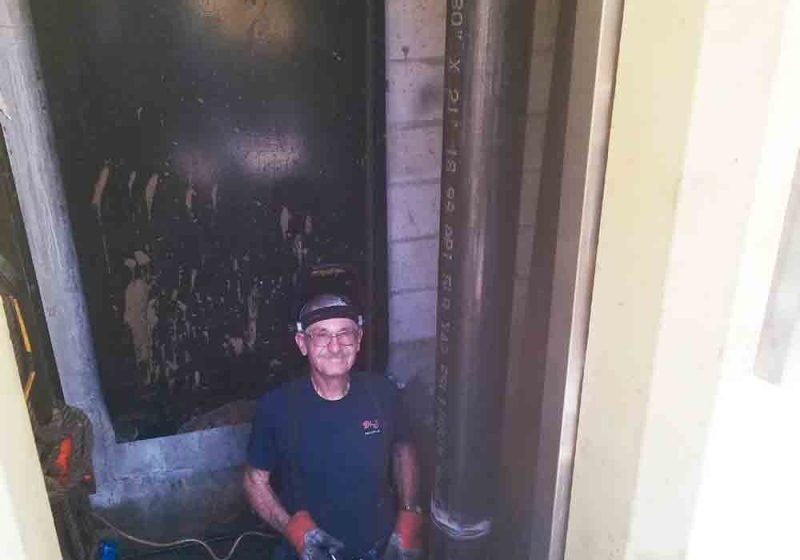September and October presented the U.S. with natural disasters of biblical proportions – from hurricanes and floods to fires. Europe, South America and Asia did not escape, either – they had floods, typhoons and earthquakes. Those who think our climate is not changing need to relocate to the Gulf Coast, Northern California or Bangladesh. The elevator industry has long pondered the problem of evacuation of people from buildings in case of fire, but ever since 9/11, this issue has expanded and become more imperative. Buildings are getting taller, and, let’s face it, we are getting older, so climbing down 50-100 floors is no longer practical for a large portion of the population.
Therefore, our focus this month is on Evacuation Solutions and Emergency Operations. The first article, Functional and Reliable Lifts at New Van der Valk Hotel by Koos van Lindenberg, explains how Mitsubishi Elevator Europe developed an evacuation function for one of the lifts in the hotel. Only a member of the Emergency Response Team can use the lift to rescue those who are disabled. This lift and the firefighters’ lift occupy the same shaft and have special features.
Looking back in time, Dr. Lee Gray writes about The Emergency Elevator Repair Service. ELEVATOR WORLD wrote the first article on using elevators in a non-fire emergency — like a nuclear attack — in the late 1950s. My father, William C. Sturgeon, who was the civil defense director of Mobile County, Alabama, chaired a committee for the National Association of Elevator Contractors. The committee proposed a schedule for evacuation using elevators (with operators) during an air raid. It is interesting that, nearly 70 years later, we are again talking about the possibility of a nuclear event.
Exploring the Concept of Using Lifts to Assist the Evacuation of Very Tall Buildings by Peter Sumner reiterates the fact that using the stairs in a very tall building can be extremely stressful for anyone not in peak condition. He proposes that incorporating lifts into the evacuation strategy must begin in the early design stages. The article continues with a fascinating study of four existing buildings and their evacuation systems. Stairwells Are Not for Wheelchairs by Kaija Wilkinson describes the development of Garaventa’s Evacu-Trac and Power Evacu-Trac for the proper evacuation of those with disabilities from a building. Evaluation of the Escalator Truss Subjected to Forced Displacement for Seismic Design by Kentaro Sekiguchi, Noritaka Horie and Hirobumi Utsunomiya examines the phenomenon of collapsing escalators during frequent earthquakes in Japan. It also highlights how Hitachi’s design adapted to seismic criteria.
Tyler Pecha writes in Emergency Power Operation with Regenerative Drives about the increased use of efficient permanent-magnet motors in high-rise buildings. He notes that the potential energy savings make regenerative units an attractive option for evacuation elevators. Finally, in Emergency Communications Are Often Overlooked, Tracy Chisholm writes about the shock of several deaths by people trapped for a long period in an elevator. Elevator manufacturers and designers need to integrate safety systems, lifting systems and communications systems to prevent fatal entrapments. She opines that elevators should be “grounded” if communications don’t work.
Our cover this month may look a bit like an evacuation gone awry, but it is actually an artwork by Dana Schutz called “Elevator.” See Daniel Levinson Wilk’s Pop Culture critique on Best and Worst of Elevator Art and Design 2017.
First up in our features is NEIEP Celebrates 50 Years by Matt Irvin (who is new to our staff this year). Created in 1967, the National Elevator Industry Educational Program (NEIEP) has trained thousands of elevator technicians over the decades. It has grown from a text-based library to a four-year program with video, text, online learning and labs. Apprenticeship was added in 2002.
The last two features involve moving people in ordinary and extraordinary ways. Feat of Engineering by Wilkinson revisits the Mid-Level Escalator Link in Hong Kong that is used by thousands a day, every day. At 25 years old, it is due to be replaced. Authorities chose Anlev for the five-year project that involves 18 sets of escalators and three sets of moving walks in a very crowded area. The Pilgrims’ Passage On Camera depicts the Hajj, the largest gathering of people on earth. Hundreds of pieces of people-moving equipment are tended by 200 Otis employees. During the six days of the Hajj, their response time is 5 minutes!
Thanks to everyone who participated in this issue. As always, we welcome your comments and critiques.
Get more of Elevator World. Sign up for our free e-newsletter.









